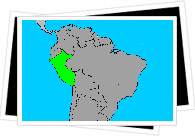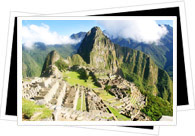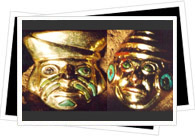
Peru is South America's third largest country, covering just under 1,300,000 square kilometres and most well known for the Inca people who began building their empire from Cusco, before the country was taken over by the Spanish.
The current population exceeds 29,500,000 of which 45% are of native origin, 37% are Mestizo (mixed race of European and indigenous), 15% are white and 3% are other groups. As in Bolivia, Peru's Amerindians are mostly from Quechua (Inca) and Aymara speaking tribes.
The country has three distinct geographical areas: The Andes mountains that often have flash floods and frequent earthquakes, the coast and the desert. Peruvians experience distinctive weather in each of these regions. The highlands average 18 degrees Celsius in the daytime with cold nights, with temperatures relating to altitude. Dry season is from May until October. The north of Peru's 2414km (1500 miles) coastline has mostly sunshine and it rarely rains. The southern half receives up to 20cm of rain per year and excluding December to March, there is often a coastal fog. The Amazon jungle has a hot humid climate which receives torrential rains, especially in the summer.
There is evidence that people have been living in Peru for ten thousand years. The first known inhabitants were nomads who roamed the coastal areas of Paracas and Chilco. Within 5 centuries the inhabitants were cultivating the land and living in small villages, settling by the inland rivers.<

One of the early Amerindian groups in Peru was the Chavin who spread amongst the highlands and along the coast. Other groups include the Paracas, known for their kiln fired ceramics and using vicuña fibres rather than cotton for their textiles. The Moche built pyramids and detailed their lives on pottery, as did too the Nazca. The Wari spread across Peru from 700AD using military force to conquer and build earthquake resistant buildings and a road system. As the Wari empire faded away, the Inca empire began.
The base of the Inca empire was Cusco, some 500km from modern day Peru's capital city of Lima. From Cusco, the Inca dominated much of western South America including Ecuador and Chile in addition to Peru. The Inca were highly skilled builders and stonemasons and there is much evidence of their empire today in Cusco and their trail to Machu Picchu, Temple of the Moon and at Lake Titicaca where the Inca's sacred rock gate lies on the Isla del Sol.

Master craftsmen, the Peruvians are skilled in making and decorating masks, pottery and ceramics, carvings of rock and wood, hat and basket weaving, tapestries and embroidery, leather work and jewellery. They also like to party and celebrate some 3000 different festivals each year from religious holidays to saint's days, harvests, traditional ceremonies or carnival. Many fiestas include some type of a procession and almost all of them involve eating and drinking typical Peruvian cuisine such as chica - an alcoholic drink made from maize.
The Peruvians have two official languages: Spanish and Quechua (the language of the Inca), although Spanish is the language used in schools and by the government. The constitution of Peru grants freedom of religion and the prevalent religion is Catholicism, although some Catholic holidays are used to celebrate traditional Amerindian holidays.
Promotional Package:Complete and useful Information and special Travel offers about Peru